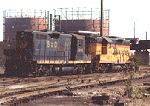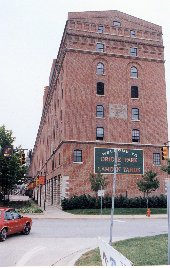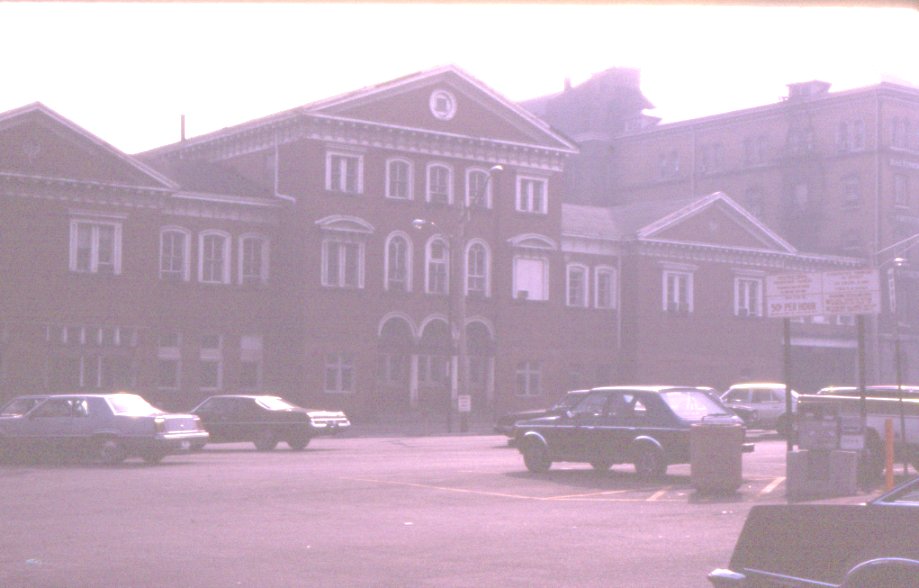 This photograph was taken in May 1977, in the twilight of Camden Yard's existence as a railroad facility. In the background are two large gas holders - now
only memories as they have been dismantled - of the Baltimore Gas & Electric Company's Spring Garden facility. The large, black bridge looming in the distance to the right and again
above the blue locomotive is the old Ostend Street bridge, now also history. Finally, the rooftop peeking above the point where the two engines are coupled is the tower roof of "HB" tower (see below).
This photograph was taken in May 1977, in the twilight of Camden Yard's existence as a railroad facility. In the background are two large gas holders - now
only memories as they have been dismantled - of the Baltimore Gas & Electric Company's Spring Garden facility. The large, black bridge looming in the distance to the right and again
above the blue locomotive is the old Ostend Street bridge, now also history. Finally, the rooftop peeking above the point where the two engines are coupled is the tower roof of "HB" tower (see below).
Photo taken May 1977
But what was here before...?
A lot of railroad was here. At the turn of the century, Camden Yard was a very busy freight and passenger terminal. The two tracks which remained at the time I took the above photos were originally part of an incredible maze of trackwork, both
at the Camden Station level and at the Howard Street Tunnel level -there were passenger platforms at the moth of the tunnel, attained by stairs which extended down from the rear of Camden Station.
Listed below are four maps I have copied of the area as it was in 1901. To view a map, click on the thumbnail in the left-hand column:
I hope that as you peruse these maps you will get a sense of the history surrounding Camden Yards and will recognize that it is more to Baltimore than just a ballpark. Camden Yards, where Camden Station served for decades as a major passenger terminus of the Baltimore and Ohio Railroad, is a cornerstone in the very foundation of the city.
Okay, that's enough homilizing. Time for more pictures! To avoid the looooong download time typical of pages which contain many photographs, each group is on its own page. To see them, click on the thumbnail image beside the descriptions.
 The Warehouse.Temptress of power hitters, landmark to thousands of drivers on South Howard Street...the sole remnant of the industry which once occupied the site of today's baseball stadium. This view was taken in 1978.
The Warehouse.Temptress of power hitters, landmark to thousands of drivers on South Howard Street...the sole remnant of the industry which once occupied the site of today's baseball stadium. This view was taken in 1978.
 The Warehouse today |
 Camden Station in 1982 - a run-down and disgraceful shell of its former self, betraying its spot in history.
Camden Station in 1982 - a run-down and disgraceful shell of its former self, betraying its spot in history.
 Back to Mike's Railroad Page
Back to Mike's Railroad Page3-D B&O logo © by Michael Calo. Commercial use prohibited without writtem permission; PERSONAL use is ok, but please tell folks where you found it. Thanks!